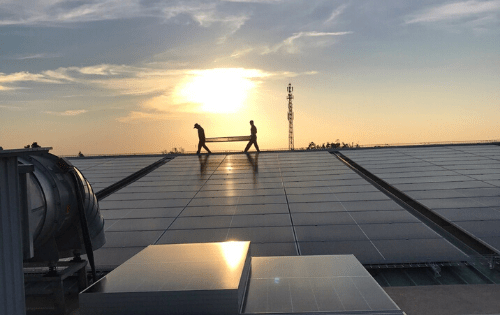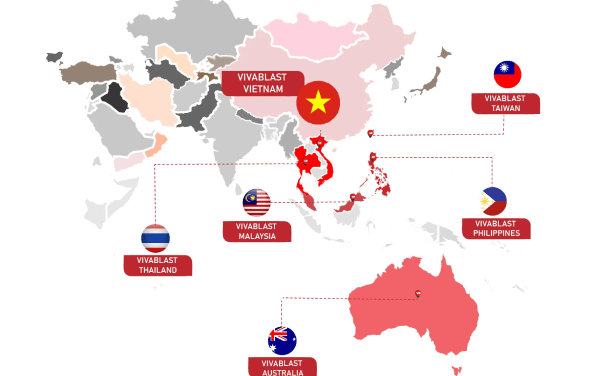Roof top solar panels are the ideal suggestion to harness solar energy, helping users save on electricity costs every month. There are 5 important components to setting up a solar roof system.
1. The advantages of roof top solar systems that you should know
Before finding out the 5 important components of a roof top solar, let’s learn about the advantages of a solar power system:
- Reduced carbon emissions: The solar system presents no health hazards and does not produce any heat-trapping gasses that contribute to global climate change. The roof top solar not only creates no carbon dioxide but also does not produce coal-related waste such as nitrous oxide, sulfur dioxide, and mercury.
- Low maintenance cost: the roof top solar systems are cost-effective system. It simply requires proper cleaning and regular maintenance with an uncomplicated process. Most solar rooftops have an average lifespan of 25 years.
- Not require much space for solar installation: Since the system is installed on the roof, no additional space is required. This is an added advantage for properties that come with a solar system.
- Cost-saving: The most valuable advantage of roof top solar panels is that they help us save money. Solar energy is much cheaper than industrial electricity. So many industries have optimized costs by installing solar power systems for factories.

Learn more about Solar installation: everything you need to know about solar power
2. 5 significant components of the roof top solar system
2.1 Sun – Indispensable element for roof top solar system
All solar systems collect energy from the sun because solar systems cannot generate energy on their own. It can only convert energy from the sun into electricity. A standard roof top solar system consists of a layer of silicon cells, a metal frame, a glass cover, and various wiring to allow electricity to flow from the silicon cells. Silicon is a nonmetal with conductive properties that allow it to absorb and convert sunlight into electricity. When sunlight interacts with the silicon cell, it causes the electrons to move, creating an electric current. This means that the sun needs to be shining for the rooftop panels to generate energy. Even on cloudy days, the panels can still generate electricity depending on the sun’s rays passing through the clouds.
2.2 Roof top solar panels with sunlight absorption function
The photovoltaic process begins with a silicon photovoltaic solar cell absorbing solar radiation. From there, the sun’s rays interact with the silicon cell and the electrons begin to move, creating an electric current. The panels generate a DC current when sunlight hits them. The amount of electricity a panel can generate depends on many factors such as panel type, panel placement, time, and temperature of the day.
2.3 Inverters in roof top solar systems to convert energy
The roof top solar panels have the function of absorbing DC electricity and supplying it to the inverter. Because the grid and home appliances run on AC electricity, therefore, the inverter must take the DC power obtained from the panels and convert it into AC to generate usable power.
2.4 Th installation location of roof top solar panels system
Solar panels are connected to the home’s electrical panel, which can distribute energy to home appliances when needed. The electrical panel is connected to every device in the system, such as a refrigerator, dishwasher, air conditioning system, or even an electric vehicle. Therefore, users should choose a suitable solar panel installation location to collect enough power for their demand.
2.5 The grid stores electricity collected by the roof top solar system
If solar panels generate more electricity than your demand, the excess energy can be channeled into the grid. On the other hand, if you use electricity at a time when your panels can not generate electricity or use more power than your panels do, the energy will be taken from the grid.
3. 11 steps to install the roof top solar system
Here are 11 steps to install a roof top solar system:
- Position the stanchions on the roof to support the solar panels.
- Screw each column through the roof and into the roof truss, and make sure the stanchion flashing panels fit underneath the roof sheet to prevent leaks.
- Fasten the upper and lower aluminum rails to the posts with stainless steel bolts, and tighten the bolts with the trigger.
- Measure diagonally from the end of the top to the end of the bottom rail. Repeat to measure the opposite diagonal distance. If the two measurements are equal, the rail is square. If they are not, adjust one of the rails.
- Install the center rail, aligning it with the top and bottom rails.
- Run the power conduit and wire to each array of solar panels.
- Install a micro-inverter under each solar panel
- Attach a 6-gauge bare copper ground wire to each inverter, which will ground the entire system.
- Make wiring connections from the location of one array of solar panels to the next.
- Place the solar panel on the stanchions, attach the plug connections together, then screw the retaining clips onto the rails to secure the panel.
- Get the electrical work done by extending the leads from the solar panels, through the new power meter, and onto an auxiliary panel.
Roof top solar systems are becoming a popular source of energy. Using solar energy not only saves money but also helps reduce the problem of environmental pollution.
Learn more about Solar system Installation and Maintenance: How to Install Solar Panels.
If you require to build a solar energy system in Vietnam, please contact VIVABLAST for direct and specific advice on your project:
- Phone: (+ 84-28) 38 965 006/7/8
- Fax: (+ 84-28) 38 965 004
- Email: vivablast@vivablast.com



